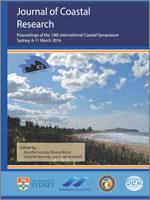Kinsela, M.A., Morris, B.D., Daley, M.J.A. and Hanslow, D.J., 2016. A Flexible Approach to Forecasting Coastline Change on Wave-Dominated Beaches. In: Vila-Concejo, A.; Bruce, E.; Kennedy, D.M., and McCarroll, R.J. (eds.), Proceedings of the 14th International Coastal Symposium (Sydney, Australia). Journal of Coastal Research, Special Issue, No. 75, pp. 952–956. Coconut Creek (Florida), ISSN 0749-0208.
Standard methods of predicting coastline change typically rely on the analysis and extrapolation of historical trends, or simple geometric rules that consider the response of idealised coastal morphology to environmental change – e.g. the Bruun rule of coastline retreat due to sea level rise. In practice, predictions based on such methods are often challenged, due to the limited capacity to characterise natural geomorphic complexity, and consequently, the inability to satisfy restrictive assumptions. While statistical simulation methods offer a means to manage uncertainty in environmental forcing, datasets, and predictive models, the continued reliance on simple geometric rules introduces unnecessary error into forecasts. The increasing coverage and detail of geomorphic datasets, provided by modern remote sensing techniques (e.g. LiDAR, GPR), means that more rigorous approaches are now achievable in many settings. This paper presents a simple yet flexible approach to forecasting coastline change on wave-dominated beaches. The method combines a Monte Carlo simulation approach with a volumetric coastline response model that features a parameterised sediment budget. Model complexity reflects the levels of topographic and geomorphic data typically available for beaches in southeastern Australia, allowing for the sediment budget parameterisation to be broad or refined. A volumetric implementation of all components of coastline variability and change ensures that forecasts are sensitive to the complex coastal geomorphology of individual beaches. Application of the method demonstrates the sensitivity of forecast coastline change to three-dimensional beach and dune morphology, irregular substrates comprising mixed hard and soft materials, and complex shoreface surfaces featuring submerged reef structures.





